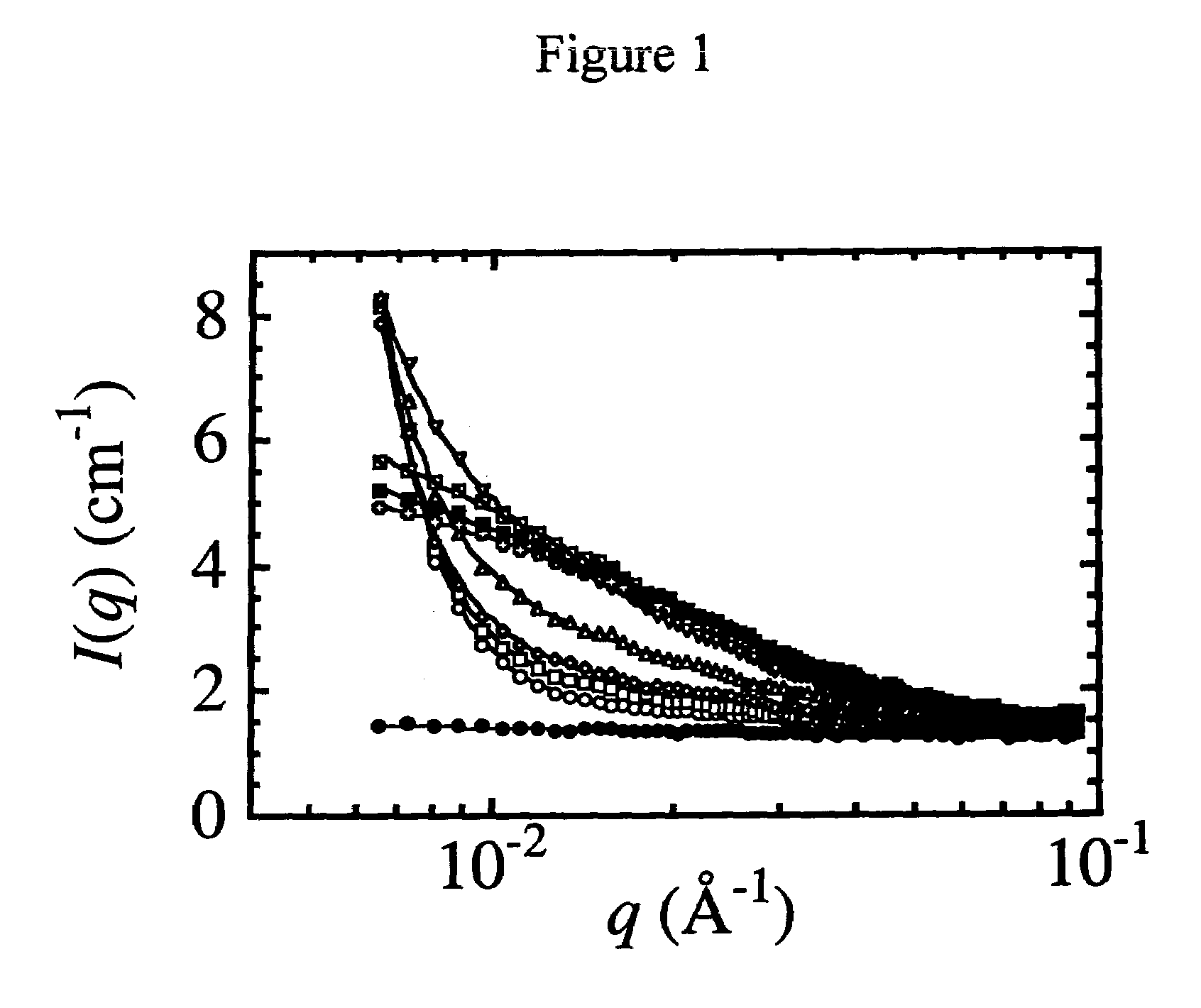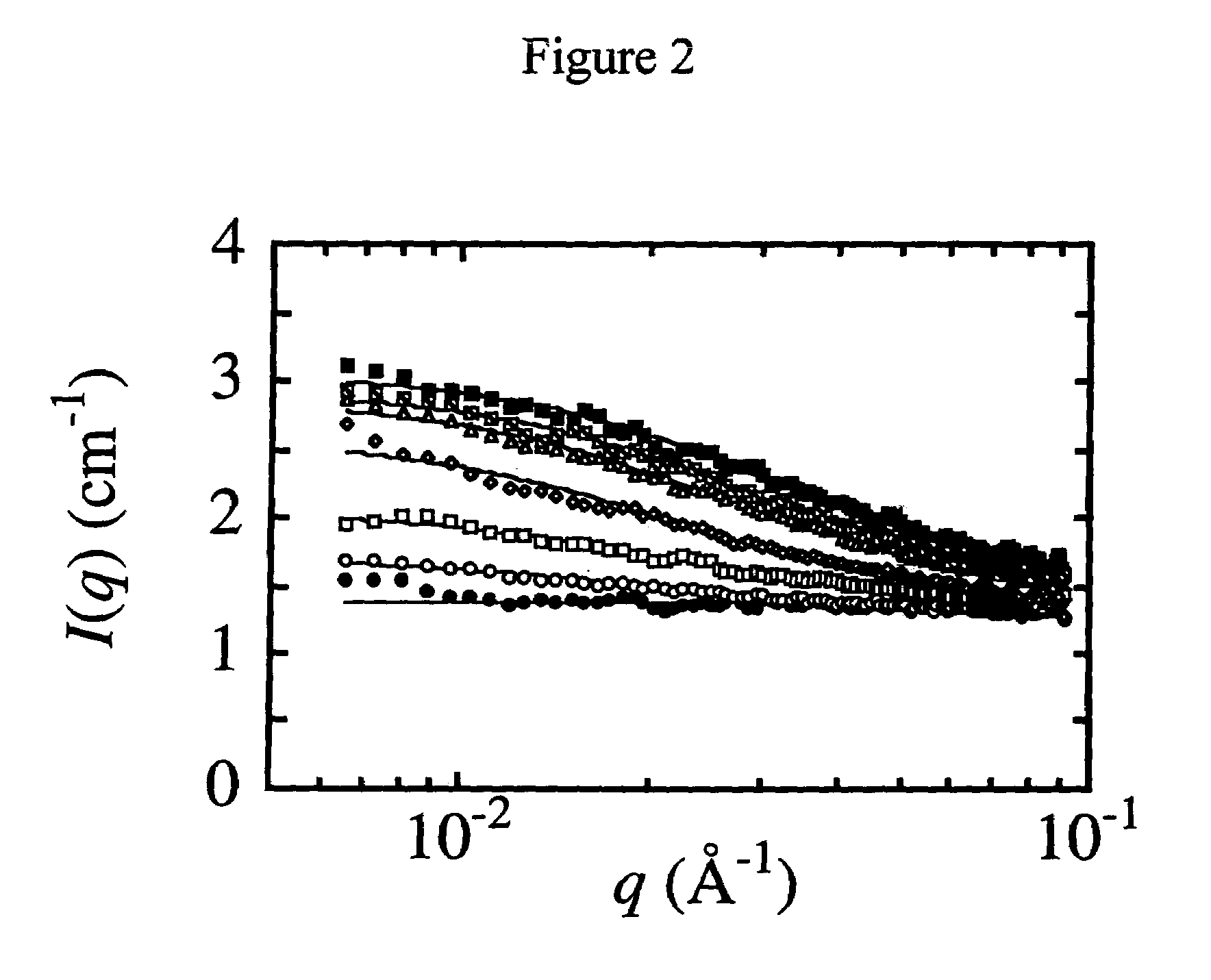Disaggregation of asphaltenes in incompatible petroleum oil mixtures
a petroleum oil mixture and asphaltene technology, applied in the direction of material analysis using wave/particle radiation, working-up pitch/asphalt/bitumen by melting, instruments, etc., can solve the problem of undesirable precipitation of asphalten
- Summary
- Abstract
- Description
- Claims
- Application Information
AI Technical Summary
Benefits of technology
Problems solved by technology
Method used
Image
Examples
Embodiment Construction
[0018]The present invention includes mild heating to disaggregate asphaltenes in blended petroleum oil mixtures. In a preferred embodiment, the presence of asphaltenes is determined by irradiating the mixture with neutrons and measuring small angle neutron scattering.
[0019]The preferred embodiment of the present invention includes sensitive neutron scattering for measuring the presence and quantity of asphaltene aggregates in a petroleum oil or in mixtures of two or more petroleum oils, any component of which may be an unprocessed crude oil or a processed oil derived from petroleum. Since the presence of such aggregates has been linked to fouling and coking in refineries (see U.S. Pat. Nos. 5,997,723 and 5,871,634), an objective measure of the presence of aggregates which may have submicron structures that cannot be detected using ordinary optical microscopy is desirable. By contrast, it is shown that small angle neutron scattering (SANS) is sensitive to asphaltene structures in pet...
PUM
| Property | Measurement | Unit |
|---|---|---|
| size | aaaaa | aaaaa |
| thickness | aaaaa | aaaaa |
| volume fraction | aaaaa | aaaaa |
Abstract
Description
Claims
Application Information
 Login to View More
Login to View More - R&D
- Intellectual Property
- Life Sciences
- Materials
- Tech Scout
- Unparalleled Data Quality
- Higher Quality Content
- 60% Fewer Hallucinations
Browse by: Latest US Patents, China's latest patents, Technical Efficacy Thesaurus, Application Domain, Technology Topic, Popular Technical Reports.
© 2025 PatSnap. All rights reserved.Legal|Privacy policy|Modern Slavery Act Transparency Statement|Sitemap|About US| Contact US: help@patsnap.com



